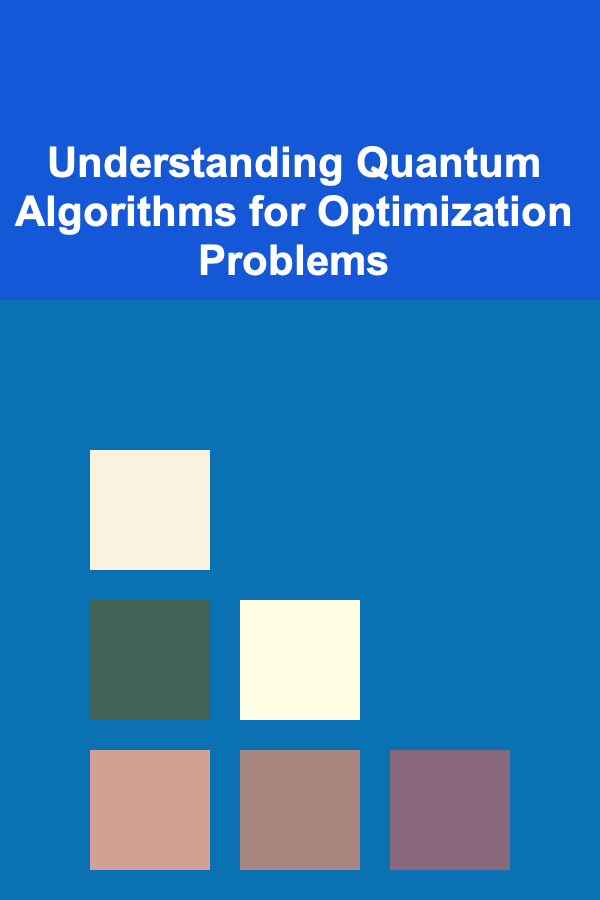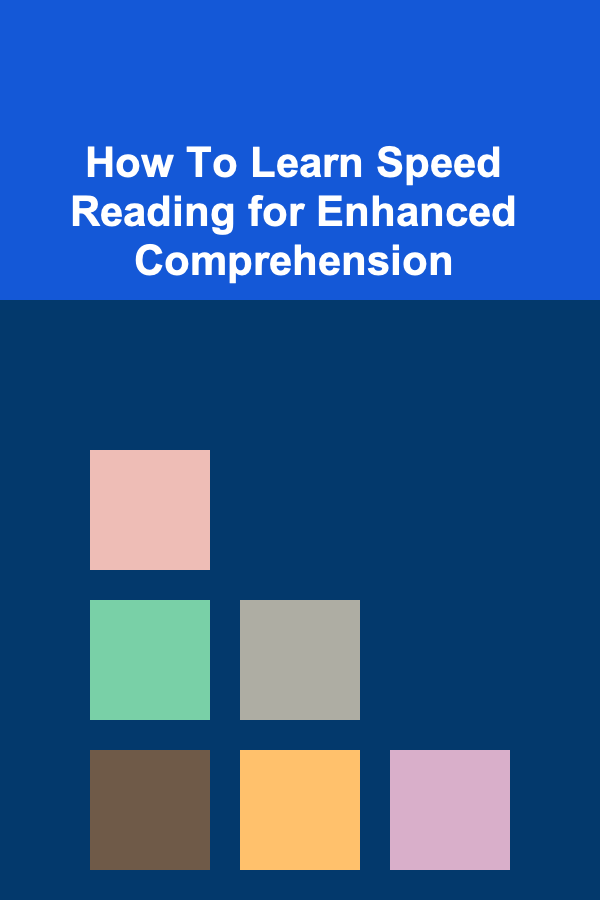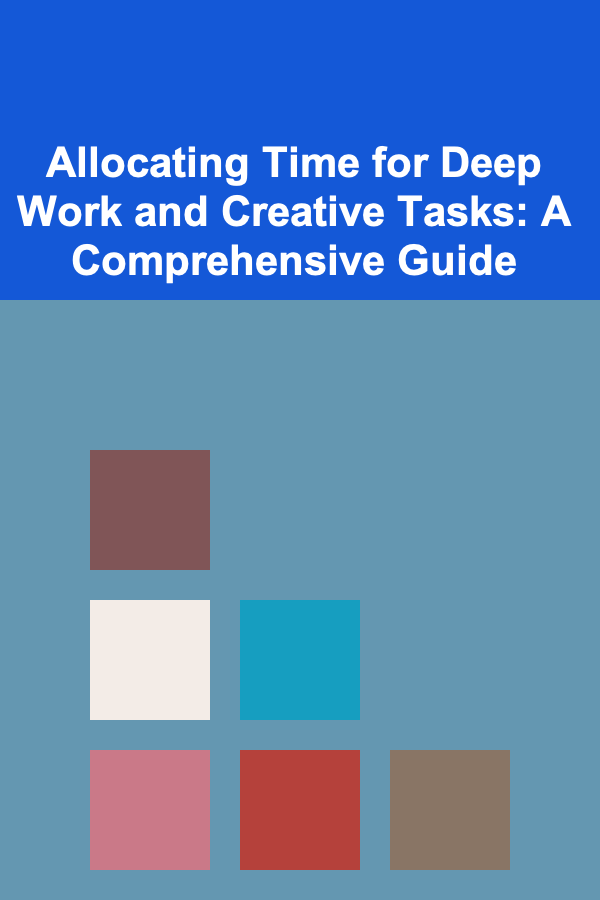
Understanding Quantum Algorithms for Optimization Problems
ebook include PDF & Audio bundle (Micro Guide)
$12.99$11.99
Limited Time Offer! Order within the next:

Optimization problems are ubiquitous in various fields, ranging from logistics and finance to machine learning and drug discovery. These problems often involve finding the best solution from a vast search space, which can be computationally intractable for classical computers. Quantum algorithms offer a promising avenue to tackle these challenging optimization problems by leveraging the principles of quantum mechanics.
The Landscape of Optimization Problems
Before delving into quantum algorithms, it's crucial to understand the types of optimization problems we aim to solve. Optimization problems generally involve minimizing or maximizing an objective function subject to certain constraints. They can be categorized into several classes, including:
- Combinatorial Optimization: These problems involve finding the optimal arrangement or selection of discrete objects. Examples include the Traveling Salesperson Problem (TSP), the Vehicle Routing Problem (VRP), and the Knapsack Problem.
- Continuous Optimization: These problems involve finding the optimal values of continuous variables. Examples include linear programming, quadratic programming, and non-linear programming.
- Constrained Optimization: These problems involve finding the optimal solution subject to constraints on the variables. These constraints can be equality or inequality constraints.
- Unconstrained Optimization: These problems involve finding the optimal solution without any constraints on the variables.
The complexity of these problems often grows exponentially with the problem size, making them difficult to solve using classical algorithms. This is where quantum algorithms come into play.
Quantum Computing Fundamentals: A Brief Overview
Quantum computing harnesses the principles of quantum mechanics to perform computations. Unlike classical bits, which can be either 0 or 1, quantum bits (qubits) can exist in a superposition of both states simultaneously. This superposition is represented by a linear combination of |0⟩ and |1⟩:
|ψ⟩ = α|0⟩ + β|1⟩
where α and β are complex numbers such that |α|² + |β|² = 1. |α|² represents the probability of measuring the qubit in the |0⟩ state, and |β|² represents the probability of measuring it in the |1⟩ state.
Another key concept is entanglement, where two or more qubits become correlated in such a way that the state of one qubit is dependent on the state of the other, regardless of the distance between them. Quantum algorithms exploit superposition and entanglement to explore multiple possibilities simultaneously and potentially achieve speedups over classical algorithms.
Quantum gates are analogous to logic gates in classical computing, but they operate on qubits and implement unitary transformations. Common quantum gates include the Hadamard gate (H), Pauli gates (X, Y, Z), and controlled-NOT gate (CNOT).
Key Quantum Algorithms for Optimization
Several quantum algorithms have been developed to address optimization problems. Here we explore the most prominent ones:
1. Grover's Algorithm
Grover's algorithm is a quantum search algorithm that can find a specific item in an unsorted database with N elements in O(√N) time, compared to O(N) time for classical algorithms. While not directly applicable to all optimization problems, it can be used as a subroutine within other optimization algorithms.
How it works: Grover's algorithm starts with a superposition of all possible states. It then iteratively applies two main operations: the Oracle and the Diffusion operator.
- The Oracle (O): The Oracle is a black box that recognizes the solution to the search problem. It marks the solution by inverting its amplitude. For an optimization problem, the Oracle can be designed to identify states that correspond to better solutions. For instance, if you want to minimize a function f(x), the Oracle could mark states where f(x) is below a certain threshold.
- The Diffusion Operator (D): The Diffusion operator amplifies the amplitude of the marked state (the solution) and de-amplifies the amplitudes of the other states. It performs an inversion about the average amplitude.
By repeatedly applying the Oracle and the Diffusion operator, the amplitude of the solution state is gradually increased, while the amplitudes of the other states are decreased. After approximately √N iterations, the measurement of the qubits yields the solution with high probability.
Application to Optimization: Grover's algorithm can be used in optimization by treating the search space as the database and designing the Oracle to identify solutions with a specific property (e.g., lower cost). For example, one could use Grover's algorithm to find the minimum value of a function by iteratively refining the search space based on the Oracle's feedback.
Limitations: Grover's algorithm provides a quadratic speedup, which is significant, but not exponential. Furthermore, constructing the Oracle can be challenging and may require significant computational resources.
2. Quantum Approximate Optimization Algorithm (QAOA)
QAOA is a hybrid quantum-classical algorithm designed to find approximate solutions to combinatorial optimization problems. It leverages a parameterized quantum circuit and a classical optimization loop to iteratively improve the solution.
How it works: QAOA involves two main components:
- Quantum Circuit: A parameterized quantum circuit is designed based on the specific optimization problem. The circuit typically consists of two alternating unitary operators: U(C, γ) and U(B, β).
- Cost Hamiltonian (C): Represents the objective function to be optimized. It is often encoded in terms of Pauli Z operators acting on the qubits. The unitary operator U(C, γ) is defined as U(C, γ) = exp(-iγC), where γ is a parameter to be optimized.
- Mixing Hamiltonian (B): Introduces transitions between different states, allowing the algorithm to explore the search space. A common choice for the mixing Hamiltonian is the sum of Pauli X operators acting on each qubit: B = Σ X~i~. The unitary operator U(B, β) is defined as U(B, β) = exp(-iβB), where β is a parameter to be optimized.
- Classical Optimization Loop: The parameters γ and β are optimized using a classical optimization algorithm (e.g., gradient descent) to minimize the expectation value of the cost Hamiltonian C. The quantum circuit is executed repeatedly with different values of γ and β, and the resulting expectation value is used to update the parameters.
The quantum circuit is initialized in a superposition state (e.g., using Hadamard gates). The alternating unitary operators U(C, γ) and U(B, β) are applied for a fixed number of layers (p). After the final layer, the qubits are measured, and the resulting bitstrings are used to estimate the expectation value of the cost Hamiltonian. The classical optimizer adjusts the parameters γ and β to minimize this expectation value.
Application to Optimization: QAOA can be applied to a wide range of combinatorial optimization problems, such as MaxCut, Max-SAT, and graph coloring. The key is to formulate the problem in terms of a cost Hamiltonian that can be efficiently implemented on a quantum computer.
Advantages: QAOA is relatively easy to implement on near-term quantum devices. It can achieve good approximate solutions for certain problems. It is a variational algorithm, meaning that it can be adapted to the specific characteristics of the problem.
Limitations: The performance of QAOA depends on the number of layers (p) and the choice of parameters γ and β. Finding optimal parameters can be challenging, and the algorithm may get stuck in local optima. There's no proven quantum advantage for QAOA over classical algorithms for many problems.
Example: MaxCut Problem
The MaxCut problem aims to partition the vertices of a graph into two sets such that the number of edges crossing the partition is maximized. Given a graph G = (V, E), where V is the set of vertices and E is the set of edges, the goal is to find a subset S ⊆ V such that the number of edges with one endpoint in S and the other endpoint in V \ S is maximized.
To formulate the MaxCut problem for QAOA, we can assign a qubit to each vertex in the graph. The state of the qubit represents whether the vertex belongs to the set S (|1⟩) or not (|0⟩). The cost Hamiltonian can be defined as:
C = Σ~(u, v) ∈ E~ (1 - Z~u~Z~v~) / 2
where Z~u~ and Z~v~ are Pauli Z operators acting on the qubits corresponding to vertices u and v. This cost Hamiltonian assigns a lower energy (higher reward) to states where the endpoints of an edge belong to different sets (Z~u~Z~v~ = -1) and a higher energy (lower reward) to states where they belong to the same set (Z~u~Z~v~ = 1). The goal of QAOA is to find the state that minimizes the expectation value of this cost Hamiltonian, which corresponds to finding the maximum cut in the graph.
3. Variational Quantum Eigensolver (VQE)
VQE is another hybrid quantum-classical algorithm used to find the ground state energy of a quantum system. It can be adapted to solve optimization problems by mapping the problem to a quantum Hamiltonian whose ground state corresponds to the optimal solution.
How it works: VQE consists of the following steps:
- Ansatz Preparation: A parameterized quantum circuit (ansatz) is designed to prepare a trial wavefunction |ψ(θ)⟩, where θ represents a set of parameters. The ansatz should be expressive enough to capture the relevant features of the ground state.
- Energy Evaluation: The energy of the trial wavefunction is evaluated using a quantum computer. This involves measuring the expectation value of the Hamiltonian H with respect to the trial wavefunction: E(θ) = ⟨ψ(θ)|H|ψ(θ)⟩. This requires decomposing the Hamiltonian into a sum of Pauli strings and measuring the expectation value of each Pauli string.
- Classical Optimization: A classical optimization algorithm is used to minimize the energy E(θ) by adjusting the parameters θ. The quantum computer is used to evaluate the energy for different values of θ, and the classical optimizer uses this information to update the parameters.
The algorithm iteratively refines the trial wavefunction until it converges to the ground state of the Hamiltonian. The choice of ansatz is crucial for the performance of VQE. Common ansatze include the Unitary Coupled Cluster (UCC) ansatz and the Hardware-Efficient Ansatz.
Application to Optimization: Optimization problems can be solved using VQE by mapping them to a quantum Hamiltonian whose ground state represents the optimal solution. For example, the Traveling Salesperson Problem (TSP) can be encoded as a quantum Hamiltonian, and VQE can be used to find the ground state, which corresponds to the shortest tour.
Advantages: VQE is well-suited for near-term quantum devices because it can be implemented with relatively shallow quantum circuits. It is also a variational algorithm, meaning that it can be adapted to the specific characteristics of the problem.
Limitations: The performance of VQE depends on the choice of ansatz and the efficiency of the classical optimization algorithm. Finding optimal parameters can be challenging, and the algorithm may get stuck in local optima. Furthermore, the number of qubits required can be significant, especially for complex problems.
4. Quantum Annealing
Quantum annealing is a heuristic quantum algorithm that attempts to find the global minimum of an objective function by exploiting quantum tunneling. It is typically implemented on specialized quantum annealing hardware, such as the D-Wave systems.
How it works: Quantum annealing starts with a simple Hamiltonian (H~0~) whose ground state is easy to prepare. The system is then gradually evolved to a more complex Hamiltonian (H~p~) that represents the optimization problem to be solved. The evolution is governed by the time-dependent Hamiltonian:
H(t) = A(t)H~0~ + B(t)H~p~
where A(t) and B(t) are time-dependent functions that control the relative strength of the two Hamiltonians. Initially, A(t) is large and B(t) is small, so the system is in the ground state of H~0~. As time progresses, A(t) decreases and B(t) increases, so the system gradually evolves towards the ground state of H~p~. The hope is that the system will remain in the ground state throughout the evolution, a process called adiabatic evolution. Quantum tunneling allows the system to tunnel through energy barriers, potentially avoiding local minima and finding the global minimum.
The problem Hamiltonian H~p~ is typically formulated as an Ising model or a Quadratic Unconstrained Binary Optimization (QUBO) problem.
Application to Optimization: Quantum annealing can be applied to a wide range of optimization problems that can be formulated as Ising models or QUBO problems. Examples include portfolio optimization, machine learning, and logistics.
Advantages: Quantum annealing can be implemented on specialized hardware that is designed to solve optimization problems. It can potentially find good solutions for complex problems in a reasonable amount of time.
Limitations: Quantum annealing is a heuristic algorithm, meaning that there is no guarantee that it will find the global minimum. The performance of quantum annealing depends on the specific hardware and the way the problem is formulated. It's debated whether D-Wave machines achieve a true quantum speedup compared to classical algorithms.
Mapping Optimization Problems to Quantum Algorithms
A crucial step in applying quantum algorithms to optimization problems is mapping the problem to a form suitable for quantum computation. This often involves:
- Problem Formulation: Defining the objective function and constraints in a clear and mathematical way.
- Variable Encoding: Representing the problem variables as qubits. This might involve binary encoding, one-hot encoding, or other suitable representations.
- Hamiltonian Construction: Constructing a quantum Hamiltonian whose ground state corresponds to the optimal solution. This may involve using Ising models, QUBO formulations, or other techniques. The complexity of this step is often problem-dependent.
- Circuit Design: Designing a quantum circuit that implements the necessary quantum operations, such as the Oracle in Grover's algorithm, the unitary operators in QAOA, or the ansatz in VQE.
The specific mapping will depend on the chosen quantum algorithm and the characteristics of the optimization problem. Efficient mapping is crucial for achieving good performance.
Challenges and Future Directions
Despite the promise of quantum algorithms for optimization, several challenges remain:
- Hardware Limitations: Current quantum computers are still in their early stages of development. They are limited in terms of qubit count, coherence time, and gate fidelity.
- Algorithm Development: More efficient and robust quantum algorithms are needed for a wider range of optimization problems. This includes improving existing algorithms like QAOA and VQE, and developing new algorithms that can leverage the full potential of quantum computation.
- Software Development: Better tools and libraries are needed to facilitate the development and implementation of quantum algorithms. This includes quantum programming languages, compilers, and simulators.
- Error Correction: Quantum computers are susceptible to errors due to noise and decoherence. Effective error correction techniques are needed to ensure the accuracy of quantum computations.
Future research directions include:
- Developing more robust and scalable quantum algorithms.
- Improving quantum hardware and overcoming the limitations of current devices.
- Developing new quantum error correction techniques.
- Exploring hybrid quantum-classical approaches that combine the strengths of both classical and quantum computing.
- Investigating the potential of quantum machine learning for optimization.
Conclusion
Quantum algorithms offer a promising approach to tackle challenging optimization problems that are intractable for classical computers. Algorithms like Grover's algorithm, QAOA, VQE, and quantum annealing leverage the principles of quantum mechanics to explore the search space more efficiently and potentially achieve speedups over classical algorithms. While quantum computing is still in its early stages of development, the potential impact on optimization is significant. As quantum hardware and software continue to improve, quantum algorithms are poised to play an increasingly important role in solving real-world optimization problems across various domains.

Beginner's Guide to Personal Finance Management
Read More
How to Incorporate Natural Lighting into Your Home Design
Read More
How to Prioritize Your Financial Goals for Long-Term Success
Read More
Unlocking Success as a Talent Acquisition Specialist: A Comprehensive Guide to Recruiting Excellence
Read More
How To Learn Speed Reading for Enhanced Comprehension
Read More
Allocating Time for Deep Work and Creative Tasks: A Comprehensive Guide
Read MoreOther Products

Beginner's Guide to Personal Finance Management
Read More
How to Incorporate Natural Lighting into Your Home Design
Read More
How to Prioritize Your Financial Goals for Long-Term Success
Read More
Unlocking Success as a Talent Acquisition Specialist: A Comprehensive Guide to Recruiting Excellence
Read More
How To Learn Speed Reading for Enhanced Comprehension
Read More